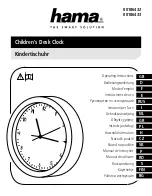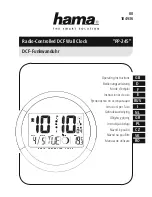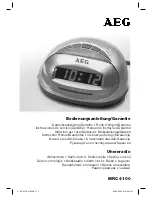
Technology and Function
of the Mechanica M
2
72
73
Two pallets made of synthetic ruby are inserted into the arms of the
pallet
*
lever and alternately engage a tooth of the escape wheel and
hold it for a short time. Every time the balance passes Dead center
*
in either direction, the pallet stone takes the pallet fork with it. The
pallet lever then releases a tooth of the escape wheel, which briefly
moves forward. The energy created by the gliding of the escape
wheel across the impulse plane of the pallet is transmitted to the
balance’s Impulse pallet via the pallet fork. Except for the short
moment in which the escapement is
linked to the balance via the pallet
fork and Impulse pallet, the oscillator
*
oscillates in a fully free manner
independent of a drive mechanism.
These are basic conditions for the
even rate
*
of a timepiece. The few
escapement types that possess this
advantage are called free or detached
escapements
*
. The Swiss lever escape-
ment
*
is thus a free escapement
*
.
Only toward the end of the eigh-
teenth
century was it possible to
manufacture such precise escape-
ments.
Despite every effort to improve
numerous details, mechanical table
clocks and wristwatches cannot
achieve the same precision that high-
quality precision pendulum clocks
offer, such as those offered by clock
manufacture Erwin Sattler. Precision
pendulum clocks were used all the
way to the middle of the last century
as national time norms, reference
clocks in observatories, and for other
scientific purposes. Only later were
they replaced little by little with quartz
and atomic clocks.
Balance staff
Safety roller
Impulse
pallet
Safety pin
Pallet
fork
Pallet fork
Banking studs
Entry
pallet
Exit
pallet
Escape
wheel
Impulse roller
Functional Movement of the Escapement
The oscillations of the balance
*
are based on the alternate exchange
of dynamic energy resulting from the motion of the balance and the
energy saved in the balance spring as return energy (torque
*
).
Discharge
*
– Lift
*
– Drop
*
This is the order in which the events of the Swiss lever escapement
*
occur during each Semi-oscillation
*
. Each ticking sound thus
comprises these three single sounds and can be recorded by the
watchmaker using a special machine (called a Timing machine
*
) and
can be differentiated by their differing volumes (see the determination
of rate precision). By analyzing the sounds, the expert can make
detailed conclusions about the sequence of the escapement’s
movements and use it as a basis for optimization. The slightly
differentiated sound made by the entry and exit pallets hitting teeth
is known to us as the tick and tock of a timepiece and result from the
varying lengths of the two arms of the pallet fork.
The different lengths of the
two arms of the pallet fork are
necessary to make sure that the
distance between the Locking
plane
*
at the entry and exit
pallets is the same distance to
the pallet fork’s fulcrum and
thus symmetrical.
The following illustrations show
the most important phases
of the interplay between the
escape wheel
*
, pallet
*
lever,
and balance
*
.
Suggestion:
A detailed description
of the functional
movement of
the escapement
(illustrations A to K)
are found on the
fold-out page at the
end of this book.
















































